Why do voles fall in love?
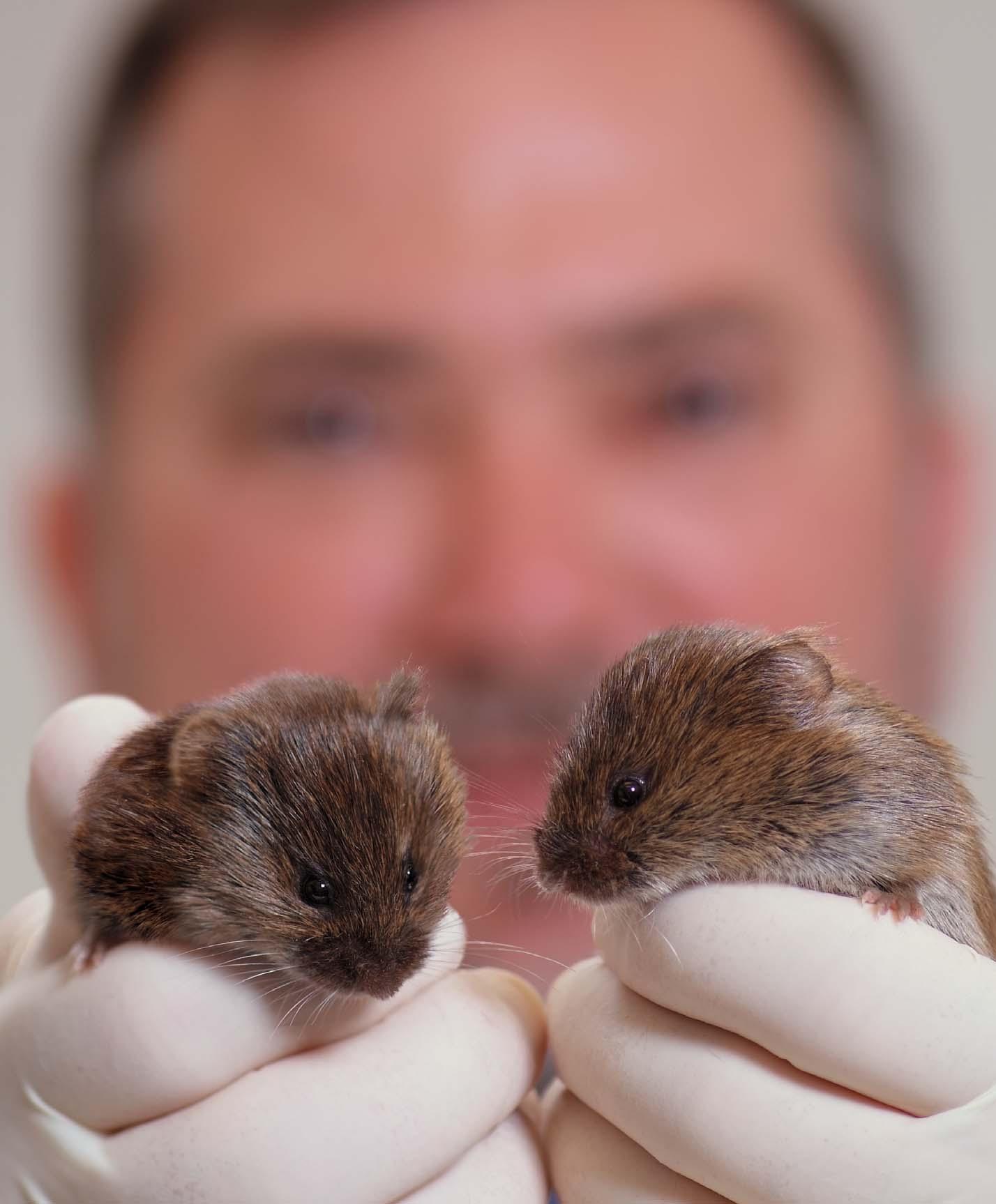
And what that means for human health. 2






Health care for the working poor 8 After cancer, what next? 12 Smallpox chronicles 25 Spring 2010
PATIENT CARE, RESEARCH, AND EDUCATION FROM THE WOODRUFF HEALTH SCIENCES CENTER
Emory Health
CEO, Woodruff Health Sciences Center
Fred Sanfilippo, MD, PhD
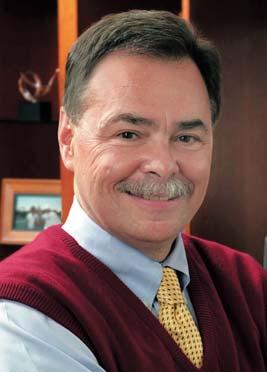
Editor Rhonda Mullen
Art Director
Peta Westmaas
Graphic Designers
Carol Hatcher, Ivey Milton
Director of Photography
Jack Kearse
Production Manager
Carol Pinto
Web Specialist
Wendy Darling
Executive Director, Health Sciences Publications
Karon Schindler
Associate Vice President, Health Sciences
Communications
Jeffrey Molter

Emory Health is published quarterly for Emory neighbors and the community as well as faculty, staff, affiliates, and friends of the Woodruff Health Sciences Center of Emory University. Produced by the Health Sciences Communications Office, the magazine is made possible by support from the Robert W. Woodruff Health Sciences Center Fund.
Send all correspondence to Emory Health, 1440 Clifton Road, Suite 150M, Atlanta, GA 30322; call 404-727-8166; or e-mail rhonda.mullen@emory.edu.

To see extra multimedia features online, visit emoryhealthmagazine.emory.edu.
FROM THE EXECUTIVE VP
Where animal research is taking us

Imagine one entity tackling some of the most troubling medical and social issues of our time, from AIDS to Alzheimer’s to addiction. Imagine one place in which fundamental questions about the causes, prevention, and treatment of some of the most devastating diseases are being answered. Now imagine such a lifesaving and lifeaffirming facility operating right in our own backyard.
That’s just what has been unfolding at Emory’s Yerkes National Primate Research Center for decades. Founded in 1930, acquired by Emory in 1956, and moved to Atlanta in 1965, Yerkes is a valuable resource to Emory, to the community, and most important, to science.
One of only eight NIH-accredited national primate research centers in the country, Yerkes helps provide elemental understanding of the behavior and biology that informs and shapes clinical and translational research. Yerkes also demonstrates how a comprehensive center can work through alignment and synergy across disciplines and units. In fact, Yerkes’ diverse teams from many departments and schools across the university are behind some extraordinary animal studies that have had enormous human impact.
In this issue, for example, you’ll read about some of the discoveries being pioneered at Yerkes—discoveries with implications for treating autism and schizophrenia, understanding the physical effects of stress, and combating the obesity epidemic.
Other Yerkes research programs are seeking ways to develop effective vaccines, address vision disorders, and treat degenerative diseases such as Alzheimer’s.
And the influence of Yerkes research extends well beyond our campus boundaries. Yerkes researchers serve as collaborators and resources to other research institutions worldwide. As an intersection of people and programs of the highest quality, Yerkes is a valuable contributor to the Woodruff Health Sciences Center’s vision of transforming health and healing … together.
Coupling 2
Yerkes researchers are merging insights about animal hormones with implications for human health.
Bargain health care 8
In a downtown Atlanta clinic, Emory alums, volunteers, and students offer the indigent and working poor something they can’t find elsewhere.
When life goes on 12
Cancer changes people, and when they survive, they face a raft of physical and emotional issues. Emory offers programs to help them cope.

Clinical care 16
The effects of stress on fertility. A proper ICU bath. Just opened: a new pharmacy on campus. Telehealth brings Emory expertise to patients in rural areas. Endoscopy for pituitary tumors.
Moving forward 20
A consideration for health care reform: social disparities. Training midwives in Ethiopia. Developing strategy for public health emergencies. Cancer’s sweet tooth. Matchmaking service for patients and clinical trials. Sniffing out muscle repairs. Next generation gene sequencing. Miracle Gro for the brain. Antagonizing fragile X. An online historical chronicle of smallpox.
A catalyst for children 26
What a growing partnership between Children’s Healthcare and Emory means for Georgia’s children and why you should care.
What do you think? Emory Health welcomes your comments—pro or con—about topics and issues covered in this magazine. Please send comments, letters to the editor, address changes, and other correspondence to Emory Health 1440 Clifton Road, 150M, Atlanta, GA 30322; email rhonda.mullen@emory.edu; or call 404-727-8166.
IN THIS ISSUE
Please share your feedback at evphafeedback@emory.edu. 8 Visit us online at emoryhealthsciences.org or our health consumer site at emoryhealthcare.org
PATIENT CARE, RESEARCH, AND EDUCATION FROM THE WOODRUFF HEALTH SCIENCES CENTER
2 12
Yerkes programs are seeking ways to develop effective vaccines, address vision disorders, and treat degenerative diseases such as Alzheimer’s.
“A lot of hard-working people come to see us here. These are people who change sheets, flip burgers, take care of us. But no one is taking care of them.”
Volume 3, No. 2
—William C. Warren IV, Good Samaritan founder
Coupling








 By Sylvia Wrobel
By Sylvia Wrobel
Monogamy—vole style







What does love—or at least monogamy—have to do with autism, schizophrenia, and other conditions with deficits in social awareness and attachment? Larry Young (left) believes his quirky little prairie voles hold some answers.

Once mating is over, fidelity does not come naturally to the vast majority of species. Even within species whose members do engage in social bonding, like humans, some individuals are better at it than others.
The popular question was, “Why do voles fall in love?” The answer, said the scientists, was that oxytocin created lifelong attachment.
In the 1990s, Young (William P. Timmie Professor of Psychiatry at Emory and chief of behavioral neuroscience at Yerkes National Primate Research Center) and Tom Insel (then director of Yerkes and now director of the National Institute of Mental Health) created a scientific and media storm when they reported that the surprisingly ubiquitous and long-lasting monogamy exhibited by a species of voles is attributable to hormones. The popular question was, “Why do voles fall in love?” The answer, said the scientists, was that oxytocin—the same hormone released during labor, delivery, and breast feeding in humans and that promotes mother-infant bonding— creates the female prairie vole’s lifelong attachment to her male partner. A related hormone, vasopressin, causes the male prairie vole to cling to the female with whom he has just had sex, forsaking all others as long as they both shall live.
3 Spring 2010
FEATURE LISTENING TO THE HORMONES c i a l a w a r e n e s s
But the story is not so romantic for all voles. Unlike the highly social, monogamous, and shared-parenting prairie voles, meadow voles couldn’t care less about past sexual partners or, for that matter, pretty much any other animal in the colony. Meadow voles are solitary and promiscuous. Males are uninvolved and seemingly unaware of their offspring.
In a finding that could have interesting implications for humans, Young next discovered that the chief difference between the two species centers on the number and location of neuroreceptors that select, bind, and respond to oxytocin and vasopressin. While both species of voles have these receptors, the prairie voles’ receptors are concentrated in the brain’s pleasure regions, the same regions involved in addiction. Young believes that activation of these receptors during mating leads to a kind of addiction to the partner.
A male meadow vole, on the other hand, is more likely to respond to vasopressin with territorial behavior. Unless, that is, a vasopressin receptor gene is inserted into the pleasure region of the brain. This single change converts the promiscuous meadow vole into an animal capable of forming strong social bonds, beginning with the female placed in his cage. Conversely, blocking the vasopressin receptor in a prairie vole’s brain is sufficient to prevent such attachments.
Hormonally and behaviorally, the once faithful prairie vole is turned into a cad.


In nature, the production of these hormones occurs in response to events like birth or sex. But remember the beauteous queen in A Midsummer Night’s Dream, who becomes besmitten with the cloddish, donkey-headed Bottom the Weaver after she consumes a love potion designed to make her fall for the first creature she sees? When Young gives a female prairie vole a dose of oxytocin or a male a dose of vasopressin, the animal bonds on sight with the nearest potential mate, even before mating occurs.
Young believes similar processes are going on in the human brain, which also contains oxytocin and vasopressin receptors. Previous studies conducted at other institutions have shown that sniffing oxytocin (pills would not make it past the blood-brain barrier) causes the human brain to pay more attention to the fine details of social signals. Eye contact increases. Individuals become better at deciphering emotions from facial
gene for vasopressin can predict whether a person will be generous, altruistic—even, according to a Swedish study, more likely to marry or report satisfaction with relationships. What role might these genetic variations play in human disorders—and what could be done to compensate for them?
For example, the best treatment now available for autism is behavioral therapy focused on social stimulation. Could oxytocin help people with autism be more receptive to social interaction? Psychosis symptoms in schizophrenia can be treated, but patients often are left with social deficits, for which there is no current treatment. Could oxytocin activate the social part of the brain in these people?
Young recently took two major steps to garner more information from his hamstersized rodents. First, he and a colleague convinced the NIH to sequence the vole genome within the next two years, a move that will accelerate the discovery of genes contributing to social function.
Second, the Yerkes collaborators developed the first transgenic voles, a technology that allows them to manipulate individual genes to understand their effect on social bonding and other complex social behaviors. Eventually, he believes the model could be

One predictable response to this research was the sudden availability of pricey oxytocin sprays for dating, business meetings, or other situations in which a little instant bonding might come in handy.
expressions and body movements, more likely to remember faces as being familiar, even more likely to trust.

One predictable response to this research was the sudden availability of pricey oxytocin sprays designed for dating, business meetings, or other situations in which a little instant bonding might come in handy.
Someday, maybe, shrugs Young. What compels him, he says, is what these discoveries may say about autism, schizophrenia, and other disorders characterized by deficits in social engagement.
We know, he says, that variations in the



Pass the Ben and Jerry’s

with high-fat, high-sugar foods—and how they behaved when the yummy stuff was taken away—may offer clues as to why people overeat.
In compounds at the Yerkes field station, as in natural forest habitats, a strong unyielding hierarchy of dominance governs rhesus macaque monkeys. It takes work to maintain a place at the top. Subordinate animals—subject to continual harassment and continually vigilant for threats of aggression—experience constant psychological stress, evident in elevated levels of stress hormones and anxious behaviors. The research of Yerkes neuroscientist Mark Wilson involves “watching what these magnificent animals do to each other naturally and learning the mechanisms through which subordination impacts their health—and ours.”
chow, fruits, and vegetables. Even though there is plenty (and dominant monkeys do not appear to protect the food), subordinate monkeys generally weigh less. Finding out why required development of an elaborate automated feeding system. Instead of an open feeding tray, the 50 females selected for Wilson’s eating study had to reach into a bin for food. A remote computer recorded each monkey’s individual microchip number and how much she took.
The subordinate monkeys’ lower weight was quickly explained. As long as the diet



consisted of standard monkey chow, the subordinates simply failed to eat as much as those in the dominant group. However, when Wilson substituted the low-fat chow with high-fat, high-sugar chow, the subordinate’s behavior changed. The subordinate monkeys began to eat more—and more, and more. The dominant monkeys, on the other hand, adjusted their consumption to their usual daily caloric intake. When daylight ended, the dominant monkeys quit eating and retreated indoors. The subordinate monkeys continued to reach into the bins.
used to improve social cognition.
The next step will be to apply the discoveries made in voles to non-human primates, whose brain function is more similar to that of humans. Young already is working with other Yerkes investigators to examine the role of oxytocin and vasopressin in non-human primate social behavior.
WEB CONNECTION To see a video on vole bonding, visit whsc.emory.edu/home/multimedia/videos/social-bonding-voles.html.
One of Wilson’s ongoing studies asks why subordinate female rhesus monkeys go through puberty later than the offspring of more dominant females. He wants to understand how this delay affects brain development and behavior and why these subordinates ovulate less often and have fewer offspring. Wilson believes the work is directly translatable to human patients seen by his research collaborator, Emory chair of OB/Gyn Sarah Berga, a leading expert on stress-induced failure to ovulate.

The aspect of this work that may have the largest implication for humans is not infertility, however, but obesity. Concerns of what, when, and why subordinate female rhesus monkeys eat compared with the eating behavior of dominant monkeys hold important clues for human overeating.

Ordinarily, the macaque colony at the Yerkes field station forages from a common feeding tray filled with low-fat monkey

4 EMORY HEALTH 5 Spring 2010 FEATURE LISTENING TO THE HORMONES
Living at the bottom of the colony’s social hierarchy, the somewhat scrawny female monkeys were always stressed. What they did when Mark Wilson and his team replaced monkey chow
At the Yerkes field station, Mark Wilson studies the behavior of rhesus macaques to understand why subordinate females go through puberty later than the offspring of more dominant females. His research has implications not only for human infertility but also, surprisingly, obesity.
t ,
.
Interestingly, the subordinates’ mounting weight had no effect on their social status, but it did substantially increase their levels of fat-derived hormones. Had this diet continued, those hormones, combined with existing high levels of the stress hormone cortisol, would almost certainly have caused the new fat to settle around abdominal organs, increasing the risk for diabetes and other metabolic problems—just as in people.
The increase [in food intake] suggests that the subordinate animals’ set point had changed, as did their view of food as something to alleviate their chronic stress and make them feel better.
That scenario, however, didn’t develop because after three weeks, the researchers switched the available chow back to the lower-fat version. That’s when things got really interesting. Having no access to the high-caloric chow caused the subordinate monkeys to become even more emotional and anxious when confronted with a stressful
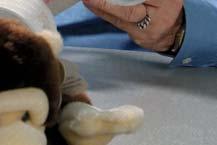

situation (for example, when an unfamiliar human intruder stared at them, something monkeys hate). Astonishingly, the subordinate monkeys now ate the low-fat monkey chow in large quantities, much more than the dominant monkeys, far more than they themselves ate before having been introduced to the highcaloric chow.



Wilson says the increase suggests that the subordinate animals’ set point had changed, as did their view of food—any food—as something to alleviate their chronic stress and make them feel better.
The findings parallel work at Wake Forest’s primate center in which subordinate rhesus monkeys self-administer more cocaine than dominant ones. Wilson believes stress related to subordination diminishes
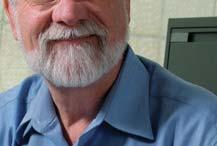
Yerkes at a glance

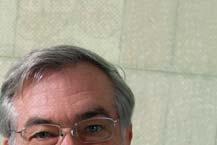



the animals’ ability to find rewards in natural stimuli, causing them to seek out other things to increase activity in the brain’s reward pathways. He is now collaborating with another Yerkes researcher in the neuro-imaging center to literally watch what happens to the reward pathways in the brains of the subordinate animals when they eat high-fat, high-sugar foods.
One of eight NIH-funded national primate research centers, Yerkes has been dedicated to advancing scientific understanding of primate biology and behavior and to improving human health for nearly eight decades. Today, the center’s collaborative studies focus on development of an AIDS vaccine, insights on aging and drug addiction, understanding progressive illness such as Parkinson’s and Alzheimer’s, the role of hormones and behavior in health, and evolutionary links between biology and behaviors like conflict and resolution. Almost two-thirds of the 3,300 non-human primates at Yerkes live in social colonies at a 117-acre field station in Lawrenceville, Georgia. Yerkes, which is part of the Woodruff Health Sciences Center at Emory, is the only U.S. primate center to have its own MRI, PET, and cyclotron (an accelerator that makes possible the study of subatomic structures in the cells).

“We have tremendous collaborative energy and scientific expertise at Yerkes,” says director Stuart Zola, “which we combine with a well-established animal colony and technical capabilities to advance science and ultimately improve human health.”
Rhesus macaque monkeys—similar to people in many ways but with shorter developmental cycles—offer Wallen the ability to change experimental variables to better understand how hormones affect gender differences in cognition and behavior.
The Yerkes field station houses rhesus monkeys in social groups of 50 or more,







allowing the colony to establish social structures and relationships similar to those in nature. That makes a big difference in understanding sexual behaviors, as does the ability to conduct precise physiologic studies in living animals.
Older observational studies of a pair of male and female rhesus monkeys placed together in a cage seemed to indicate that males wanted sex and females went along. In the natural setting, however, that’s not the way it works.



Yes, males may be consistently interested, but females are the ones who initiate sex. If they don’t initiate it, it doesn’t happen. What motivates a female has less to do with the male’s personal appeal or status than what her hormones are saying. It’s true that, as seasonal breeders, rhesus females may be interested in sex only three to five months each year (when they can become pregnant). But it is curious that they remain interested in sex even after they become rhesus senior citizens of 20 or 25 Wallen and his team study which hormones regulate sexual motivation, the results of which they believe will lead to better understanding of the lack or loss of sexual desire in some women, especially after menopause.


Another gender study in monkeys by Wallen and other Yerkes researchers looked at toy preferences of male and female macaques. As any human parent might have predicted, the 11 young rhesus males in the study never hesitated when given a choice between plush doll-like toys or ones with wheels. The 23 females, however, were far less constrained in their preferences, playing almost equally with plush and action toys.

Wallen says the males’ strong, stereotypical preference for action toys parallels the action-packed way they play, just as the 23 young females’ greater interest in the plush toys parallels their greater interest in real infants. Such preference differences are unlikely to have occurred through socialization (monkeys don’t watch ads or suffer teasing from their playmates). Instead they may reflect permanent changes in preference resulting from the hormones they were exposed to in their mother’s womb. EH


Spr ing ng 20 2 10
What women want
6 EMORY HEALTH FEATURE LISTENING TO THE
Sigmund Freud complained that he couldn’t figure it out. But when it comes to when to have sex or other matters, Yerkes neuroendocrinologist Kim Wallen knows what gets females’ interest.
HORMONES
In his study of toy preferences of monkeys, Wallen found that males preferred cars made of PVC pipes over plush dolls while females played equally with the cuddly and action toy choices.
u t . s ,
Robert Yerkes, shown with his first two great apes, Chim and Panzee, established the primate research center in 1930.
Bargain health care

 By Mary Loftus • Photography by Jack Kearse
By Mary Loftus • Photography by Jack Kearse
The waiting room of Good Samaritan Health Center in Atlanta is nearly full at 10:30 this Tuesday morning: A young couple holds a baby with a cough, passing her back and forth. A woman sits wrapped in a plaid blanket. Two elderly patients discuss their medications. A toddler with a Spiderman backpack hangs upside down while his dad ties his sneakers.
A donation basket in the corner holds travel-size soaps and shampoos. A sign for the dental clinic reads: “$50 flat fee unless destitute—must bring current letter from shelter.” On the wall is a plaque of donor names, and beside them, a quote from Matthew 25:40: “I tell you the truth, whatever you did for one of the least of these brothers of mine, you did for me.”
Fifteen years ago, Good Samaritan’s founder and president, William Warren IV decided to leave a successful pediatrics practice to pro-

vide primary care to people who were unable to afford it otherwise. A fifthgeneration Atlantan and a 1979 graduate of Emory’s medical school, Warren is the son of William C. Warren III (an Emory business school graduate), grandson of William C. Warren Jr. (a 1922 Emory medical school graduate), and great-grandson of Coca-Cola founder Asa Candler.
“The idea of philanthropy was ingrained in me,” he says. “I sensed in my heart the need to do this, as a Christian and as a human being.”
In 1998 after volunteering at several free clinics and churches, Warren felt called to open his own private, nonprofit health care clinic in a renovated warehouse near Centennial Olympic Park to serve the indigent and working poor.
This spring, just 12 years later, Good Samaritan moved into a new building that has allowed it to triple its space. With 18 treatment rooms, 15 dental chairs, and a mental health suite, the clinic is staffed by 30 paid employees and several hundred volun-
Spring 2010 9
FEATURE ANSWERING THE CALL
In a downtown Atlanta clinic, Emory alums, volunteers, and students offer the indigent and working poor something they can’t find elsewhere.
The great-grandson of Coca-Cola founder Asa Candler, William Warren puts the Good Samaritan story into daily practice at his nonprofit health clinic.
teers, including Emory medical students and physician assistants in training.

“A lot of hard-working people come to see us here. These are people who change sheets, flip burgers, take care of us. But no one is taking care of them,” Warren says, while working his way through a stack of paperwork on his desk. The center is a nonprofit that takes no government funding, operating solely on private donations. “As individuals, we have an obligation to help that sick 2-year-old with no health insurance and a 104-degree fever. We do, not the government.”
“You want to come back again” Today, as most days, medical staff and volunteers bustle about, reading charts, talking with patients, discussing cases, writing prescriptions. Snippets of conversation in several languages drift through the hallways.
“Many of the patients speak Spanish or Portuguese, so there is often the need for interpreters as well as medical volunteers,” says Abigail Yandell, a second-year Emory medical student and Good Samaritan volunteer. “I’d say about half of our class volunteer their time here or at another clinic.”
Last April, Yandell helped start a Monday night clinic at “Good Sam,” as the students call it, which allowed the near-capacity center to take on new patients and provided more convenient hours for those who work.
“There’s a steep learning curve here for student volunteers, but it’s the type of experience that if you do it once, you want to come back again,” says Yandell, a Memphis native who knew from second grade on that she wanted to be a doctor. “You leave feeling happy and encouraged by the patients, who are so appreciative of the care.”
Yandell remembers in particular one patient with type 1 diabetes whose disease had landed her in the emergency room. The hospital released her with just one of several medicines she needed to maintain her health.
“She wasn’t given the care she deserved,” Yandell says. “The ER is not the right place for people with chronic diseases. They need primary care and follow-ups to learn how to properly manage their illnesses.”
Clinic coordinator Jonathan Beus began volunteering at Good Sam in 2007 during his first year of medical school. He believes student-run clinics provide a win-win situation for students and patients, with the quality of patient care protected by preceptors (usually from the Emory faculty) that students recruit.
“Students who volunteer at the clinic learn about the lives of and challenges in caring for the working poor,” Beus says, “and patients receive care they may not be able to access otherwise.”
Volunteer Marisa Rea, who will receive her master’s of medical science in Emory’s physician assistant program in December, selected the program for a similar reason: its focus on providing primary care to underserved populations.

“Like most people who go into a health care profession, I want to help people in need,” she says. “Because Good Samaritan is a learning environment, we are encouraged to take our time and form a relationship with patients. Many of the patients come to the clinic on a regular basis, and I find myself looking forward to seeing them.”
And when those patients leave the clinic with medicine in hand and a greater knowledge of how to care for themselves, Rea feels the clinic is performing “a tremendous service to the Atlanta community.”
Spreading the good news
The need for the Good Samaritan Health Center is apparent in its rapid growth. Starting with only eight staff members and a handful of volunteers, it has an annual budget today of $2.5 million and 25,000 patient visits a year. The center charges reduced fees based on a sliding scale that considers income and family size.

Because there are no geographic restrictions, patients often make a long trek. For example, Bernice Ryans, 42 has been coming to Good Samaritan for her health and dental care for nearly five years, even though the facility is an hour’s drive from her house.

“When I lived in Alabama for a few years, I had no dentist, so when I got back here I had 11 cavities,” says the single mother. Her
oldest son, who has asthma, comes to Good Samaritan for his health care too.

Good Samaritan has two affiliates, in Gwinnett and Cobb counties. Although those centers have separate boards, they “cross-pollinate” with the original clinic, Warren says. “We helped birth them.”

Low-cost clinics have been hard hit by the recession, both in increased need for services and decreased donations, according to Warren. “We are filling a need that is not met elsewhere. People come to us because they have nowhere else to go,” he says. The staff and volunteers see patients for everything from earaches to cancer, providing vaccinations and minor trauma care. Warren describes the center as “a health care home for the needy from cradle to grave.”
The only basic medical services the center is unable to provide are surgery and delivering babies. However, retired physician Ed Slappey—who practiced in Macon for 29 years—now volunteers a half-day each week, providing ob/gyn and prenatal care. Good Sam, says Slappey, lets him continue with his favorite part of his career: patient care.
Likewise, Angela Mendez, a certified translator and medical interpreter fluent in Spanish, German, French, and English, began volunteering 16 hours a week at the clinic in May after retiring. “I take it as seriously as a job,” she says. “I had many volunteer options, but here I can donate my skills and do what I’m trained to do.”
As director of the center, Warren enjoys seeing this productive confluence of retirees
and students, staff and volunteers, patients and care providers. “We make a true difference in people’s lives,” he says.
Janice Whitaker, who was referred to Good Samaritan by a friend after she lost her job in the mortgage loan business—along with her medical insurance—can testify to that. The staff has provided both health care and neighborly support for her during troubled times.

“I’ve had some personal things that have happened—I lost my father right before Thanksgiving and everybody here knew what I was going through, and they were so very nice,” says Whitaker, who lives with her mother and helps care for her 101-year-old grandmother. “You just don’t find that much anymore.” EH
To see a slideshow about the Good Samaritan Center, visit whsc.emory.edu/goodsam. For more information, to volunteer, or to support the center, call 404-523-6571 or visit goodsamatlanta.org.
EMORY HEALTH 10 Spring 2010 11
FEATURE ANSWERING THE CALL
Medical student Abigail Yandell
Volunteer Ed Slappey with Warren
Translator Angela Mendez
Recent patient Bernice Ryans
Recent patient Janice Whitaker
The Good Samaritan Center offers a full range of outpatient services. Center founder William Warren IV, right, describes the center, which is run by volunteers (many of them with ties to Emory), as a “health care home for the needy from cradle to grave.”
By Robin Tricoles • Photography by Jack Kearse
Darren Johnson spent his 19th birthday undergoing a bone marrow transplant. A few weeks earlier, Johnson had been diagnosed with myelodysplasia, a form of leukemia in which the bone marrow fails to produce enough normal blood cells. He endured a year of treatment and then a lengthy recovery.
Now 26, Johnson attends the Medical University of South Carolina, where he is studying to become a physician assistant, a very different career from the one he had in mind when he was diagnosed with cancer eight years ago.
If someone gave me a chance to go back and change what I went through, I don’t think I would,” says Johnson, a 2007 Emory graduate. “It was a really important experience I had to go through. It changed my outlook. It changed my life.”
Like Johnson, people diagnosed with cancer undergo fundamental life changes, each with a personal experience of the disease and treatment. They face a multitude of issues: changes in personal relationships and careers, financial pressures, physical difficulties, concerns about sexuality, and emotional fallout.
Fallout shelter
Only relatively recently have health care

providers turned serious attention to the emotional well-being of cancer patients. They have realized that easing the emotional burden of a cancer diagnosis for patients and families may actually improve treatment and outcome.
The Winship Cancer Institute offers a collaborative approach for dealing with cancer that begins as soon as a patient is diagnosed. The program considers the emotional, psychologic, and physical symptoms associated with cancer and its treatment. And options for patients may include cognitive therapy, antidepressants, or both. Anger, fear, and anxiety mixed with the physical and emotional side effects of cancer treatments can lead to depression during and even after treatment, when patients may feel isolated.
A cancer diagnosis is tough for families too. Johnson believes it was harder on his parents than him. “You don’t want
to see your child struggle,” he says. “Even now when I get a cold, my father gets concerned.” His younger brother, Colin, 16 during Darren’s treatment, had a particularly difficult time seeing his brother in the ICU. (The two now share an apartment in Charleston.)
And even when patients get beyond the initial diagnosis and treatment, they still know they are at risk of a cancer recurrence. “That’s always in the back of your mind,” Johnson says. “Whenever a simple thing comes up, a muscle ache or a bump, you think this could be a sarcoma or who knows what.”
Learning from other survivors
Although family and friends often rally around patients, talking with others who have been diagnosed with cancer is invaluable. That’s where cancer support groups come in, such as the one at Winship that pairs a newly diagnosed
When life goes on EMORY HEALTH
Cancer changes people, and when they survive, they face a raft of physical and emotional issues. Emory offers programs to help them cope. Here’s the jour ney of one pediatric cancer patient, Darren Johnson, who made it.

12 FEATURE AFTER THE CURE
patient with a partner who has recovered from cancer. Survivors can share their own experiences and listen empathetically as a new patient begins a process that is fraught with anxiety. Studies have shown that support groups like this one help participants feel happier, less isolated, and more hopeful.
“You can’t really complain to other people who haven’t had cancer because no one really understands what you’re talking about,” Johnson says, who began attending a cancer survivor group of young adults who meet in Atlanta a year ago. “Everyone there goes through the same things, no matter what kind of cancer they are diagnosed with. We talk about all sorts of things. We even talk about sexuality, which is a big, big issue for a lot of people.”
When people are diagnosed with a lifethreatening disease like cancer, survival is paramount, and other activities, including sexual intimacy, often get pushed aside. But that doesn’t mean they go away. Some common sexual issues that cancer survivors face include impotence, difficulties with emotional and physical intimacy after bodyaltering treatment, premature symptoms of menopause, and infertility.
While Johnson hasn’t encountered any issues with intimacy, his treatment did leave him infertile. “I was lucky enough to be of age to have some sperm frozen,” he says. “The doctors at Children’s Hospital of Atlanta said, you really want to think about this because you’re going to care about this
later on in your life. And they were right.”
Although cancer survivorship in kids is now greater than 80%, the side effects of treatments can cause difficulties later in life.
Children’s growth can be stunted, internal organs damaged, cognitive development delayed or squelched, and fertility lost. Many of chemotherapy’s long-term effects are silent for years before they rear up to cause heart issues or other problems elsewhere in the body.
Johnson, for example, has had two hip replacements because of the side effects of the drugs that cured his cancer. The replacements have allowed him to stay physically active by participating in low-impact sports such as swimming and biking, but highimpact sports such as basketball are no longer a part of his life.


After care
More and more people are living longer after being diagnosed with cancer thanks in part to better treatment. But researchers have also found improved outcomes for patients receiving physical and emotional support before, during, and after treatment.
That’s why Emory’s Winship Cancer Institute (left) offers patients and their families a wide variety of programs and services aimed at improving outcomes and quality of life. For example, patient and family psychologic counseling, financial services, support groups, and nutritional advice are some of the many services available through Winship.

For a complete list of support services, please visit: whsc.emory.edu/r_csupport.html.
Finding a reset button
Andrew Miller and his colleagues have an idea about why some cancer patients continue to suffer from emotional and physical problems even after their cancer is cured. It rests in what he and other researchers in Emory’s Mind Body Program are learning about the effects of the immune system on the brain and behavior.

When the immune system is activated, it triggers a series of events leading to the release of cytokine molecules that cause inflammation. These cytokines can get into the brain and wreak havoc, in essence changing the chemistry and circuitry of the brain and resulting in depression, fatigue, and impaired memory and concentration. “We believe this process is activated in cancer treatment when surgery, chemotherapy, radiation, or even psychological stress, set the immune system in motion,” says Miller.
Staying physically active is especially important for cancer patients. Exercise can play an important role in controlling fatigue, improving cardiovascular fitness, losing or maintaining weight, improving mood, and managing stress. And so can the right diet.
Many foods—particularly fruits, vegetables, and legumes—display potent anticancer activities, according to Emory medical oncologist Omer Kucuk. For example, specific food compounds such as soy isoflavones and the spice curcumin may increase the effectiveness of chemotherapy and radiation therapy in patients with advanced prostate cancer.
“The compounds sensitize the cancer cells to chemotherapy and radiation while protecting normal tissues from the side effects of these treatments,” says Kucuk. What’s more, many nutritional compounds used for therapy or disease prevention have few, if any, side effects. Lycopene,
a carotenoid in tomatoes, for example, has cancer-preventing properties. Kucuk recommends eating a couple of ounces of tomato paste every day as part of a regular diet.
Side effects—the good kind
Despite the difficulties experienced in the aftermath of cancer, patients can thrive. Some end up tapping previously unacknowledged talents and desires, such as happened with Johnson.
“I started my freshman year in college wanting to be an anchor for ESPN,” he says But while I was in the hospital, I realized that I would like to be a part of caring for people, so I decided to go into medicine. The people at the hospital were doing great things for me, and I realized then that I wanted to do this for other people. It really changed my path. I’m so happy. I love my life. It’s great to wake up every morning and think: what can I do today.” EH
By the end of the six-week treatment for breast cancer, for example, 90% of patients experience radiation-induced fatigue. But even after the therapy ends, up to 20% of patients continue to be fatigued. Miller believes this continuation may have to do with changes in the immune system that get turned on during treatment and fail to switch off after treatment ends. This chronic fatigue can ruin a person’s quality of life.
One Emory donor saw his wife struggle with symptoms of depression and fatigue even after her breast cancer was successfully treated. Emory researchers now have parlayed a $450,000 gift from that donor into more than $4 million in national grants to study how they can counteract the debilitating psychological and physical effects of inflammation from cancer treatments.
Their research in essence attempts to find a reset button for cancer patients whose treatments set off inflammation.
They are studying the specific pathways and genetic changes that occur in response to treatment and using brain imaging to pinpoint the best places to look for cytokine damage. They also are examining whether lifestyle changes, such as mindfulness meditation and other stress-reducing techniques, can teach the immune system to better tolerate stress and limit inflammation. And they are exploring whether drugs (such as infliximab, a cytokine blocker) or natural occurring ingredients (such as curcumin, found in the Indian spice turmeric) can reduce inflammation and treat depression and fatigue.
The infliximab trial, the first of its kind in the United States, is attempting to block the release of cytokines in patients whose depression has failed to respond to all other treatments. “If we can block cytokines and treat depression, that is a game changer,” says Miller.
–Rhonda Mullen
EMORY HEALTH 14 Spring 2010 15 E M O RY HEALT H S pring 201 0 FEATURE AFTER THE CURE
Playing fertility in a different key
Sometimes a couple can’t get pregnant although anatomically everything seems normal. Emory reproductive endocrinologist Sarah Berga may be able to explain why: stress.
Berga has been working on research that backs up this hypothesis since 1984. What she’s found is that chronic stress acts on the main messengers in the brain that send signals to the body. The process of changing the brain message in turn changes the hormones involved with reproduction.
Specifically, gonadotrophic releasing hormone (GnRH) released from the hypothalamus in the brain sends signals to the pituitary, which then sends signals to the ovaries, affecting ovulation and menstrual cycles. Chronic stress causes these brain messages to slow down, and if the ovaries receive too few signals, ovulation and menses may cease.
Berga likens what happens to a musician playing a piano. The hands play a melody, interpreting the music and affecting the mood of the score. While the musician’s hands don’t change the piano—a solid, fixed instrument—the way they play the piano affects the way the music sounds. The same with genes, which are static, until played by stress, changing the spatiotemporal patterns and affecting every hormone involved in reproduction.
“We think we can fix infertility with assisted reproductive technology, so we don’t as a society invest in really understanding the role of stress,” says Berga, chair of OB/GYN at Emory. “But what if we could fix infertility by de-stressing people, both
women and men, by working to play the piano keys differently?”
In animal studies with colleagues at the University of Pitsburgh and the Oregon Health and Sciences University, Berga has found that 10% of rhesus monkeys stopped ovulating when subjected to social stress. When their food intake and exercise was manipulated, again 10% of the monkeys stopped menstruating. However, when nutrition and social stressors were combined, more than 70% of the monkeys were affected by amenorrhea. In further studies with colleagues at the Yerkes National Primate Research Center, Berga has found that the social status of premenopausal monkeys influences their risk of atherosclerosis and other chronic conditions.
In research in people, Berga has found parallel results. She took the “gardenvariety woman” who was missing menstrual periods and studied possible anatomical causes, brain messages to the ovaries, levels

of cortisol (a stress hormone), and thyroid function. Stress will always reduce thyroid function, she says.
Then she tried cognitive behavior therapy in some of the women to see if it could influence their menstrual cycles. This talk therapy covered elements of good nutrition and appropriate amounts of exercise, problemsolving strategies and coping mechanisms, realistic attitudes and expectations, and ways to deal with common stressors.
It worked. Ovulation was restored in seven of eight women who underwent cognitive behavioral therapy, compared with only two of the eight women who did not get the therapy.
The way the hormone keys are played, i.e. the effects of stress, also has implications that extend well beyond pregnancy.
“Maternal health is critical for fetal health,” says Berga. “Health begins in utero, not at birth, and there are long-term health consequences for women after pregnancy and for the child, continuing into adulthood.”
Maternal health can affect a baby’s eventual risk of cardiovascular disease, obesity and diabetes, neuro-developmental disorders such as autism, and psychiatric disease.
Berga is passionate about exploring these connections, but recently she’s cut back on research to spend more time in the clinic with patients. “We need to translate these insights into the clinical arena,” she says. While Emory’s infertility clinics offer high-tech treatments such as in vitro fertilization, they also give women the oppor-
tunity to participate in cognitive behavior therapy programs—a low-cost approach to infertility. And once pregnant, women can enroll in centering pregnancy programs to reduce stress.
A better bath:

Despite advances in reproductive technology, maternal mortality is worsening in the United States, says Berga. In 1980, the country experienced the nadir of maternal mortality, with 8 in 100,000 women dying during childbirth. But since then, the number has been rising. Although the United States spends more than any other country on health care, it currently ranks only 33 in maternal mortality. Georgia has the highest maternal mortality in the United States.
Health begins in utero, not at birth, and there are long-term health consequences for women after pregnancy and for the child, continuing into adulthood.
Berga believes that stronger support for women’s health offers an opportunity to improve the general health of the state and the nation. “To reduce disease burden, we must invest in maternal and paternal health before, during, and after conception,” she says. —Rhonda
Mullen
WEB CONNECTION For more information, call 404-778-7777 to attend a free fertility seminar. To hear Sarah Berga discuss stress and infertility, visit youtube.com/watch?v=FWp4Ad314kU.
Or to learn more about declining reproductive health rates in the U.S., see youtube.com/watch?v=GGcolPBP1sU.
Soap and water have always been essential elements to bathing. But in the ICUs at Emory University Hospital, the traditional approach has been replaced by something better—chlorhexidine gluconate (CHG), an antimicrobial. Emory clinical nurse specialists Carolyn Holder and Mary Zellinger set out to see if they could decrease hospital-associated bloodstream infections in ICU patients by using CHG. Along with teams in the Emory Hospital cardiovascular and medical ICUs, they trained staff to use warm CHG cloths for patient baths and identified skin-care products that were compatible with CHG. Six months after their intervention was implemented, bloodstream infections were down by 50%. The research team next hopes to expand the CHG daily baths to general units at the hospital.
Emory researchers also have shown that using CHG to cleanse a patient’s skin prior to surgery instead of the more commonly used povidone iodine also reduces surgical infections by 41%. (Of 1.7 million health care-associated infections each year in U.S. hospitals, 400,000 involve infections at surgical sites.) The findings, by Emory surgeon Alexandra Webb and research teams at six university-affiliated hospitals, were published in the Jan. 7, 2010, issue of the New England Journal of Medicine.
CLINICAL CARE FOR PATIENTS AND REFERRING PHYSICIANS EMORY HEALTH 16 Spring 2010 17
HG CHG HG CHG CHG HG
Got computer? See doctor
A new dimension in surgery
New faces
New campus pharmacy
Rather than making the trek to a retail pharmacy off campus, Emory patients now have access to a fullservice pharmacy onsite.

The Pharmacy at Emory opened for business in March on the second floor of The Emory Clinic, building A, near the skywalk to Emory University Hospital. It offers prescription drugs that patients would find at a local pharmacy, over-the-counter medicines, and medications that are sometimes more difficult to find (such as those for treating certain types of cancer and transplant medicines).
“This new facility will help reduce the time, effort, and inconvenience for patients, allowing them more time to concentrate on healing and recovery,” says Emory pharmacist Amir Emamifar.
For many people living in a rural area, life can be quiet, peaceful, and uncomplicated. But when a health crisis strikes, the lack of specialists in the area can make health care challenging. Patients often have to travel dozens or even hundreds of miles to see a specialist in a large city for treatment and follow-up. But in Georgia, that may not always be necessary, thanks to a new development.
The nonprofit Georgia Partnership for Telehealth allows patients in rural areas to seek specialized care close to home. The organization contracts with medical practices and hospital systems throughout Georgia. The hospitals, including those in Emory Healthcare, provide a range of specialists that connect virtually with patients.
Patients go to a medical office in their area. Both the local office and the Emory office are equipped with computer cameras with live video. The patient and the nurse at the local office can see the Emory doctor on their screen. The nurse performs the exam and can move the camera at the doctor’s request. Special equipment allows the doctor to see the heartbeat in the patient’s neck and listen remotely to heartbeats and lungs.
“It’s really everything we could do in the office,” says Rashell Stephenson, the telehealth coordinator for Emory’s Heart and Vascular Center.
“One of the biggest benefits is that it reduces health care disparities in rural Georgia. Some people can’t get to Atlanta to see a specialist—they can’t pay for travel or lose the time at work. This lessens the patient’s burden.”

Of the 159 counties in Georgia, 66 lack medical centers and 47 have no acute care hospitals. Emory markets its telehealth services in areas at least 75 miles from Atlanta. The service doesn’t seek to replace the patient’s home physician.

Emory Healthcare offers telehealth services in cardiology, transplant, and geriatric psychiatry. The Emory Transplant Center began using telehealth in 2009 for pre- and post-transplant appointments.
“At first we thought that the younger computer-savvy patients would be the ones who would most like telemedicine,” says Virginia Bowen, nurse manager of the outpatient transplant clinic at Emory University Hospital, “but it turns out that telemedicine has multi-generational interest.” —Kay Torrance
WEB CONNECTION For more information on telehealth, call Emory Health Connection at 404-778-7777 or visit emoryhealthcare. org/connecting/healthconnection.html.
Although the size of a pea, the pituitary gland, located deep within the skull at the base of the brain, is indispensible. Known as the master gland, it directs other glands to produce hormones that affect metabolism, blood pressure, sexuality, reproduction, and development and growth, as well as other bodily functions. So when something goes wrong with the pituitary, such as the development of a tumor, the consequences can be serious, even life threatening. Relatively common, pituitary tumors initially can be difficult to diagnose and, once found, difficult to remove because they are surrounded by so many nerves, such as those that supply the eye with movement and vision and blood vessels that supply the brain with blood.
Emory’s Pituitary Center is one of a handful of medical centers across the country using the latest 3-D endoscope for removal of pituitary tumors, a delicate and precise procedure. Having the new 3-D endoscope is a tremendous aid for a surgeon when operating on a small organ at the base of the brain, says Emory neurosurgeon Nelson Oyesiku (above right).
“This really is a dramatic gamechanger,” Oyesiku says. “For many years, the standard has been to use traditional 2-D endoscopy technology, which had drawbacks because of the distortion and lack of depth. The 3-D imaging gives the surgeon depth perception, extremely important in a sensitive area like the pituitary.”
The latest evolution of this technology provides surgeons with the best visuals, which in turn means better clinical outcomes, safer operations, better patient satisfaction, less time in the operating room, shorter hospital stays, and quicker recovery time, according to Oyesiku. —Robin Tricoles

WEB CONNECTION To see endoscopic pituitary surgery, visit whsc.emory.edu/r_pituitary. html. To learn more, visit emoryhealthcare.org/connecting/healthconnection.html. To make an appointment, call 404-778-5770.
The Emory Clinic recently welcomed these physicians to its staff.
Cardiology: Robert Taylor
Critical care: Craig Coopersmith
Emergency medicine : Abigail Hankin, Lekha Shah
Gynecology and obstetrics: Peter Hyel

Hematology and medical oncology: Sujatha Murali, Taofeek Owonikoko
Hospital medicine: Adepeju Champion, Patricia Haibach, Shazia Naib, Kelly Qatsha, Gary Rzenik, and Irfan Syed
Infectious diseases: Jay Varkey
Neurology: Jeffrey Rumbaugh
Ophthalmology: Paul Pruett
Radiology: Michael Cohen, Ekta Gupta, Sherif Nour, Michael Osipow

To learn what these doctors can do to help you, call 404-778-7777 or visit emoryhealthcare. org/connecting/healthconnection.html.
Emory’s biggest losers
What transpired from January through March in Emory’s internal medicine department at the 1525 Building may not have been up to reality TV standards, but it was a successful attempt to get healthy and shed some weight. The group diet that the 42 doctors, nurses, and staff members undertook resulted in a total weight loss of 352 pounds, and they are still counting.
Spearheaded by Rachel Scott, the effort required participants to eliminate two foods from their daily diets that might be harmful to health. Fried foods, chocolate, “bad” carbs, and sodas were among those that many gave up to promote healthy eating. In addition to improving the health of the staff, the promotion had a positive impact on patients, who learned by example, Scott says.
EMORY HEALTH 18 Spring 2010 19
CLINICAL CARE FOR PATIENTS AND REFERRING PHYSICIANS
ILLUSTRATION BY WENDY DARLING
The 3-D imaging gives the surgeon depth perception, extremely important in a sensitive area like the pituitary.
SORTing out symptoms of H1N1 Closing the gap
Some of the most influential leaders in academic medicine have another consideration to add to health care reform— the social factors that affect health.
A new report by the Blue Ridge Academic Health Group shines a bright light on the impact that social determinants have on the health and well-being of society. These social determinants—as defined by the WHO include access to health care, poverty, education, and work, leisure, and living conditions. These factors substantially impact the health of people and nations, and they contribute to disparities in health care systems around the world, including the United States.
For example, in Montgomery County, Maryland, an affluent suburb of Washington, D.C., the average life expectancy for whites is 80 years but only 63 years for African Americans. What accounts for this disparity of almost 22% is the substantial, yet less than fully understood contribution of the social determinants of health, according to the Blue Ridge report authors.
While health care reform is an important part of the solution of eliminating disparities, it can’t succeed unless widespread social conditions underlying those disparities are addressed, say the Blue Ridge co-chairs Fred Sanfilippo, Emory executive vice president for health affairs, and Don Detmer, professor of medical education at the University of Virginia.
The report calls for further research to better answer how the social determinants of health impact clinical effectiveness, costs, insurance, regulations, and policies. To see specific recommendations of the Blue Ridge Group or to download the report, visit blueridgegroup.org.

Preventing death while giving life

When the first wave of the h1n1 virus hit last summer, people with flu symptoms began trickling into emergency departments across the country.
Doctors knew that crowded waiting rooms could make the problem worse. People sick with H1N1 could infect others, speeding the overall rate of infection.
Many emergency departments were overloaded already, and an emerging pandemic could further weaken the health care system. Getting information out to a confused public was vital. People needed to know what symptoms constitute H1N1 versus seasonal flu. If flu symptoms were present, was a trip to the hospital or a primary care doctor necessary?
The first online tool to help answer questions like this is now available. People enter their age and answer a few questions about their symptoms and, voilà, a recommendation pops up about the level of care they should seek. The questions and recommendations are based on an algorithm developed by two Emory emergency physicians more than a year ago—long before H1N1 arrived on the scene.
The algorithm is SORT—strategy for offsite rapid triage, and it was designed to aid in a public health emergency. It uses three sets of questions to determine if patients meet the criteria for an illness, to gather information about symptoms, and to record responses about general health. Based on the answers, a person is placed into one of three categories: high risk (needs immediate medical attention), intermediate risk (can see a doctor for evaluation), or low risk (can recover at home or administer self-care).
SORT was crafted as a way to manage the surge if large numbers of people suddenly entered the health system, says Emory emergency medicine specialist Alex Isakov, director of Emory’s Office of Critical Event Preparedness and Response. “The goal was to identify the most severely ill, while redirecting large numbers of symptomatic people away from crowded hospitals without compromising their care.”
Isakov and colleagues developed SORT in 2008. They tapped Emory health literacy expert Ruth Parker, who helped test the wording of SORT questions with more than 100 people of various ages and socioeconomic backgrounds in several cities. Among her findings: people better understand “pee” than “urinate,” and college students rarely know their body temp.
After tweaking the H1N1 SORT questions, Emory offered the tool free of charge. Microsoft hosted the H1N1 website for free, and the CDC and the U.S. Department of Health and Human Services used slightly modified versions of SORT on their websites. The registered nurses who answer calls at Emory HealthConnection used a paper version of SORT for questions about H1N1
So far, the website, h1n1responsecenter.com has received more than 1 million hits. Experts can quickly update information online when new findings about the virus strain become available. “This tool isn’t static, and it shouldn’t be,” Isakov says.
“SORT allows you to ‘dial up or ‘dial down’ how conservative the tool will be depending on circumstances of the pandemic.” —Kay Torrance
WEB CONNECTION To use the online tool, visit h1n1responsecenter.com.


Nurse midwife Lynn Sibley was in rural Belize watching traditional birth attendants assist women in labor. As the women vigorously pushed and pulled the mother’s cervix, something midwives in the United States are trained never to do, she cringed. But she was there only to observe, conducting research for an anthropology dissertation. She made it clear to the attendants that she wouldn’t interfere unless they asked for her help, and in a couple of emergencies, they did.
That experience was fresh in Sibley’s mind when she began to develop a program to train birth attendants and midwives in developing countries while respecting cultural norms and beliefs. She first tested the program in India, and it worked so well that it spread to six other countries, including Haiti, Bangladesh, and Ethiopia.

Now, with the help of an $8.1 million grant from the Bill & Melinda Gates Foundation, Sibley is taking the Ethiopian program to a national level. The grant is the largest ever to Emory’s Nell Hodgson Woodruff School of Nursing, where Sibley is an associate professor.
“In settings where home birth is still the norm, safe, clean care during labor, delivery, and the postnatal period are critical to survival,” Sibley says.
The infant mortality rate is just as grim. An average of 81 newborns die per 1,000 births in Ethiopia, whereas in the United States, the average number of newborn deaths per 1,000 births is six. The vast majority of babies in Ethiopia are born at home.
The Ethiopia project uses a teaching package of simple, yet critical, procedures that birth attendants or family caregivers can perform, such as massaging the womb and nipple, making sure the mother stays hydrated, and not rushing the exit of the placenta. Ethiopian instructors distribute the packages, which include picture cards for illiterate populations, to health extension workers, community health volunteers, and traditional birth attendants.



“In settings where home birth is still the norm, safe, clean care during labor, delivery, and the postnatal period are critical to survival,” says nurse midwife Lynn Sibley.
The program, however, stops short of teaching birth attendants or families to handle serious complications on their own. In such an event, families are encouraged to seek professional help. But for many people in developing countries, help is hours away.
With a population of 80 million people, Ethiopia has one of the world’s highest birth rates. It also has one of the world’s highest rates of maternal and newborn deaths. In sub-Saharan Africa, the risk of maternal death is 1 in 16, compared with developed countries, where the rate is 1 in 2,800. More than 25,000 women in Ethiopia die of birthing complications each year.


Sibley is excited about the prospects in Ethiopia, based on her prior experiences. When she first tested her strategy there, what was supposed to be a two-hour session with village elders turned into two days. The elders were so interested in the program that they wanted help to set up their own data-collection system.
“It was really incredible to see the initiative there take root so vigorously. The Ethiopians feel they haven’t done their duty until they’ve told someone about this in the next village,” she says. —Kay Torrance
MOVING FORWARD MORE NEWS Spring 2010 21 EMORY HEALTH 20
ref pa eli w co th a B F Report 14 | March 2010 The Blue Ridge Academic Health Group The Role of Academic Health Centers in Addressing the Social Determinants of Health
Cancers’ sweet tooth may be weakness
Like cranky children clamoring for a candy bar, cancer cells crave sugar. Scientists who study cancer have known for decades that cancer cells tend to consume more glucose, or blood sugar, than healthy cells, but they haven’t figured out a way to exploit cancer cells’ collective sweet tooth.

Now a team led by Emory’s Winship Cancer Institute has identified an enzyme called PKM2, which governs cancer cells’ preference for glucose and may be a valuable anti-cancer drug target. The results were published November 2009 in the journal Science Signaling.
Cancer cells prefer to turn glucose into energy with a process known as glycolysis, says hematology/oncology researcher Jing Chen. This tendency is known as the “Warburg effect,” honoring Otto Warburg, a German biochemist and 1931 Nobelist. Normally, cells have two modes of burning glucose, which are comparable to sprinting and long-distance running: glycolysis, which doesn’t require oxygen and doesn’t consume all of the glucose molecule, and oxidative phosphorylation, which requires oxygen and is more thorough in its consumption.
Cancer cells benefit from glycolysis because they often outgrow their blood supply and their easy access to oxygen, Chen says. They also benefit from glycolysis because leftovers from the inefficient consumption of glucose can be used as building blocks for growing cells quickly.
Chen and his colleagues focused on PKM2 (pyruvate kinase M2) because it controls whether cells make the switch between glycolysis and oxidative phosphorylation. PKM2 is found predominantly in fetal and tumor cells.
Six billion nucleotides daily



Emory geneticists have a new tool in their laboratory: a next-generation sequencing system that enables them to analyze multiple genes at the same time. The new technology, the Applied Biosystems SOLiD system, makes it easier to analyze disorders in which many possible genes are implicated. Identification of genetic mutations is important for diagnosis confirmation, genetic counseling, risk assessment, and carrier screening.
The current gold standard for genetics sequencing technology allows geneticists to sequence approximately 800 megabases per day. A megabase measures the length of DNA fragments and is equal to 1 million nucleotides (segments of DNA that are made up of the chemical bases A,C,T, and G). By comparison, the new technology will generate

Matchmaking patients with studies Flexing the nose
In many types of cancer, proteins called tyrosine kinases became overactivated. Chen’s team showed that tyrosine kinases turn off PKM2 in lung, breast, prostate, and blood cancers. Introducing a form of PKM2 that is insensitive to tyrosine kinases into cancer cells forces the cells to grow more slowly and be more dependent on oxygen, they found. Because the active form of PKM2 consists of four protein molecules stuck together, having a tyrosine kinase flip the “off” switch on one molecule can dampen activity for others.
“People knew for decades that tyrosine kinases might modify PKM2 but they didn’t think it mattered,” Chen says. “We showed that such a modification is important. You even don’t need that much modification of PKM2 to make a difference in the cells’ metabolism.”
PKM2 could be a good drug target to slow down cancer cell growth. Activating PKM2 would force cells to grow more slowly—as in Chen’s experiment—and blocking it completely could also impede cells from processing nutrients. Biotechnology companies are already searching for ways to do both, Chen says. —Quinn
Eastman
more than 6,000 megabases per day. The instrument also uses two-base encoding, sequencing each base twice to provide greater accuracy and confidence in detecting mutations.

“This new sequencing capability will help lower the barrier to genetic testing for complex disorders and will be an important step in ending the diagnostic odyssey that families now face,” says Emory geneticist Madhuri Hegde.
The use of next-generation sequencing technology will allow Emory’s Department of Human Genetics to offer panel testing, at a reasonable cost, for conditions such as X-linked intellectual disability, a disorder that involves many genes. “The more of these genes we can analyze, the better our chances of finding what is causing the disorder,” says Hegde.
People who want to participate in studies of treatments for heart disease, cancer, stroke, and depression can now connect online with researchers nationwide by joining ResearchMatch. org. The new website, sponsored by the National Center for Research Resources (NCRR) of the NIH brings together researchers and people who would like to learn more about available clinical research studies.
Emory University is one of 51 institutions participating in this first national, secure, volunteer recruitment registry.

“This is a wonderful opportunity for those who are interested in participating in clinical research—young or old, healthy or sick,” says Arlene Chapman, Emory professor of medicine and co-principal investigator of the Atlanta Clinical and Translational Science Institute (ACTSI). “By participating in researchmatch.org, those with a rare disease or condition can find out more about available clinical research studies being conducted throughout the United States.” ResearchMatch will connect any interested U.S. resident with researchers who are approved to recruit potential research volunteers through the system. When an individual registers at the ResearchMatch website, personal information is protected until the volunteer authorizes the release of his or her contact information to a specific study of interest. Volunteers are notified electronically that they are a possible match and then can decide whether to provide their contact information to a researcher.
ResearchMatch is the product of the NCRR’s Clinical and Translational Science Awards Consortium (CTSA). The group is a national network of 46 medical research institutions working together to improve the way biomedical research is conducted across the country. Emory leads the ACTSI, a CTSA partnership including Morehouse School of Medicine, Georgia Tech, and Children’s Healthcare of Atlanta. WEB CONNECTION More information is available at researchmatch.org.
The next time you head to the gym, you might be tempted to check your nose at the door. But there’s at least one molecule in the nose worth taking along.

When muscle cells need repair, they use odor-detecting tools similar to those found in the nose to start the process.

Found on the surfaces of neurons inside the nose, odorant receptors bind and respond to substances wafting through the air. Emory pharmacologist Grace Pavlath and graduate student Christine Griffin have discovered that one particular odorant receptor gene, MOR23 is active in muscle cells undergoing repair.
Pavlath was surprised by the finding. “Normally MOR23 is not turned on when the tissue is at rest, so we wouldn’t have picked it up without looking specifically at muscle injury,” she says.

It turns out that interfering with the MOR23 gene inhibits the ability of muscle cells to migrate, stick to each other, and form long fibers. In addition, MOR23 is the first molecule researchers have identified that seems to influence the process of myofiber branching (a form of degeneration seen in muscular dystrophies and aging).
When muscle cells need to repair themselves, they use odor-detecting tools similar to those found in the nose to start the process.
The research, published in the November issue of Developmental Cell, could lead to new ways to treat muscular dystrophies and other muscle-wasting diseases. It suggests that odorant receptors may have additional functions in other tissues too.
Pavlath wants to identify the molecule in the body that activates MOR23 and investigate what jobs other odorant receptors perform in muscle. “There is a tremendous variation in humans as far as what odors individuals can recognize,” she says. “Could this be linked somehow to differences in the ability to repair muscle?”
Eastman
MOVING FORWARD MORE NEWS Spring 2010 23
22 EMORY HEALTH
—Quinn
ILLUSTRATION BY DON MORRIS
Miracle-Gro for brain cells
That’s how scientists have described BDNF (brain-derived neurotrophic factor), a protein produced by the body that helps brain cells grow and withstand stress. A lack of BDNF is thought to lie behind depression and several neurodegenerative diseases.
Emory pathologist Keqiang Ye has discovered a compound that can mimic the effects of BDNF on brain cells. The compound holds promise as a foundation for a new class of brainprotecting drugs.
For most of the 20th century, scientists commonly believed that people were born


with all the brain cells they would ever have. However, with the discovery of neurogenesis—the creation of new brain cells—in adults, that belief recently has changed.

BDNF appears to play a critical role in that process.
This potential for treating neurologic diseases with BDNF has led to clinical trials, in which the protein is injected into patients’ spinal fluid.
But the side effects— sensory alterations, weight loss, or nausea— are unpleasant.
At this point, “the trouble with BDNF is one of delivery,” Ye says. “It’s a protein, so it can’t cross the





Antagonizing fragile X
Nearly three decades ago, an Emory-led international team identified fragile X syndrome as the most common inherited cause of intellectual disability . In 1991, Emory human genetics chair Stephen Warren and his colleagues discovered the mutated gene on the X chromosome that causes this disorder. The scientists helped develop a screening test for fragile X and have been studying it ever since.
But until now there has been no treatment. That may soon change. Along with four other medical centers, Emory is participating in a phase 2 clinical trial that will test a targeted drug therapy for fragile X syndrome. The randomized, double-blind study has 32 adult participants from 18 to 50 years, who have fragile X syndrome. A second study will continue testing the most effective dose of the drug against a placebo in 28 participants.
In the United States, fragile X syndrome is the most commonly known cause of autism, accounting for 2% to 5% of cases. It affects approximately 1 in 4,000 males and 1 in 8,000 females, in addition to many more unknown carriers of the mutation. A premutation of the gene is
blood-brain barrier, and it degrades quickly.”

The discovery of easy-to-deliver molecules that have the same effects as BDNF gives Ye a way around that obstacle. He and his team have identified a compound, 7,8-dihydroxyflavone, that can partially prevent the death of nerve cells in animal models of seizure, stroke, and Parkinson’s disease. They are now conducting additional studies in animals to see which forms of this compound are likely to be the least toxic and the most stable.
7,8-dihydroxyflavone is a member of the flavonoid family of compounds, many of which have antioxidant properties and are found naturally in foods ranging from cherries to soybeans. “It is possible that many people injest small amounts of 7,8-dihydroxyflavone in their diets,” Ye says.
“But drinking green tea or eating apples may not give you enough for a sustained effect.”
—Quinn Eastman
present in 1 in 800 males and 1 in 260 females.
Warren and others have learned that the genetic mutation inhibits the production of a protein, FMRP, which regulates the amount of other proteins produced in the brain. Scientists have since discovered that the absence of this protein leads to the overproduction of synaptic proteins triggered by the activity of mGluR5, a glutamate receptor that is part of the brain’s signaling mechanism. The absence of this protein results in the complex learning and behavior problems of fragile X syndrome.
“The drug we are testing is an mGluR5 antagonist, which puts a brake on the mGluR5 activity and may improve learning and cognition,” says Emory geneticist Jeannie Visootsak, the study’s principal investigator.
“In mouse and fruit fly models, we were able to improve cognition with an mGluR5 antagonist.”

Last year, researchers conducted a phase 1 trial of the drug in adults without fragile X syndrome, noting no serious adverse events. The current trial will assess safety as well as efficacy.
The smallpox chronicles

On December 4, 1966, William Foege was in Nigeria working on smallpox eradication in eastern Nigeria as an Epidemic Intelligence Service officer for the cdc. A missionary asked if he could come to a remote area to look at what he thought might be smallpox. Traveling seven miles off-road on French Solex power bicycles, Foege confirmed smallpox cases when he arrived with his CDC team.
“It was so early in the program, we didn’t have much in the way of supplies, and then I learned we wouldn’t get any more supplies,” says the Emory professor emeritus of global health. “We were faced with the question of how to use our small amount of smallpox vaccine most effectively under these conditions.”
Foege’s story from the history pages of smallpox eradication is just one covered in an online global health archive hosted by the Emory University Libraries. The Global Health Chronicles launched last October to coincide with the 30th anniversary of worldwide smallpox eradication.
What Foege did in the face of limited supplies of vaccine changed the course of the smallpox eradication effort. He learned that each night at 7, the missionaries in eastern Nigeria would radio each other to make sure

The EIS officers also tried to outsmart the smallpox virus. They believed the virus would need susceptible hosts to continue spreading, so they began to track where people were likely to go based on market and family patterns. They chose the three areas that seemed the most susceptible and used the rest of their vaccine supply in those areas.
They believed the virus would need susceptible hosts to continue spreading, so they began to track where people were likely to go based on market and family patterns.
no one was having a medical emergency. Spreading out maps, he assigned each missionary a geographic area to send runners to every village to locate any smallpox cases. Twenty-four hours later, at the next nightly radio time, he had his answers.
“That night we knew exactly where smallpox was,” Foege says. “Our strategy was to use most of the vaccine in the villages where we knew that smallpox existed.”
The smallpox outbreak came to a full halt in four weeks, even though only a small portion of the population had been vaccinated.
Ring vaccination was a key strategy in turning around the epidemic. In this approach, direct contacts of diagnosed cases were identified and vaccinated.
“We began to wonder if this new strategy might be worth trying in larger areas,” Foege remembers. “We talked to the Ministry of Health. It was a very crucial time, because war was being talked about every day. The Ministry of Health said that in the eastern

region, they were willing to change the whole strategy against smallpox. We could put all of our attention on finding smallpox and containing each outbreak. Five months later, when war fever was at a peak, we were working on the last known outbreak in that entire region of 12 million people. In five months, we’d cleared out every outbreak.”
The Global Health Chronicles gives an overview of the smallpox eradication effort through video, interviews, previously unpublished field reports, and digitized books. Compiled by staff at the Emory Libraries, Emory’s Global Health Institute, the Rollins School of Public Health, and colleagues from CDC the project features oral histories of the people who played a significant role to stop the spread of smallpox in 22 countries in Africa, as well as in India, Bangladesh, and Nepal. —Rhonda
Mullen
WEB CONNECTION To hear more of Foege’s experience in Nigeria, view the archive at globalhealthchronicles.org.





EMORY HEALTH 24 Spring 2010 25 MOVING FORWARD MORE NEWS
A catalyst for children
By Donna Hyland
At the beginning of 2010, Children’s Healthcare of Atlanta made a major announcement that we would invest $75 million over the next five years in pediatric research. Specifically, we committed to investing in eight initial key priority areas (see box, facing page).

Why did we take on this big commitment? The short answer is that the health of Georgia’s children depends on it. Our mission is to provide the best clinical care that we can for the kids we serve, and already we are the largest pediatric health care system in the United States, with more than 600,000 patient visits in 2009. However, Georgia ranks only 42nd in child health and
well-being in the United States. We want to substantially improve outcomes for children and move Georgia quickly into the top 10 in child health.
The best way to do that is to align research with clinical care. Pediatric research is the way we’ll make real improvements.
While $75 million is a big investment, it would be only a drop in the bucket if we were starting from scratch. But that is not the case. We have a rich tradition of working with partners in Atlanta, not only Emory but also Georgia Tech, Morehouse, the CDC and others. By leveraging our relationships, we think we can have a real impact.
For example, at Children’s at Hughes Spalding, which Children’s began managing
atrics and Children’s) is the largest pediatric multispecialty group in the state, and the vast majority of physicians who work at Children’s at Egleston are Emory faculty.

The partners also benefit from shared leadership. Barbara Stoll, the first chair of pediatrics to be jointly recruited and hired by Emory and Children’s, is now senior vice president and chief academic officer for Children’s. In March 2009, Emory and Children’s jointly recruited and hired Paul Spearman as chief research officer at Children’s and as vice chair of research in Emory’s department of pediatrics. These appointments solidify a long-standing commitment between the two partners to expand pediatric research in Georgia.
Emory helps lead the Atlanta Clinical and Translational Science Institute (ACTSI), in which Children’s participates. The ACTSI is an NIH-sponsored partnership of Atlanta research and health care institutions working to accelerate basic research findings into new

treatments. The collaboration has enabled the first dedicated pediatric clinical research unit to open at Children’s.
Also Children’s and Emory are making plans for a joint research building, funded in part by a $25 million grant from the Joseph B. Whitehead Foundation to Children’s.
Many other places in the country focused on pediatric research lack a structure that allows them to work collaboratively.
Children’s and Emory are lucky in that regard. We have cultures that are interwoven, allowing us to have a true joint focus.

The second fastest growing institution in NIH funding in 2009, Emory’s Woodruff Health Sciences Center has a proven capacity for quality research and clinical studies as well as a nationally respected pediatrics department. Add to that the clinical strengths of Children’s and the sheer volume of patients we see (including the largest pediatric sickle cell patient population in the United States), and the result is a chance to make dramatic
Donna Hyland, shown here with her own children, is president and CEO of Children’s Healthcare of Atlanta, the country’s largest pediatric health system. Managing more than 600,000 patient visits annually at three hospitals (Scottish Rite, Egleston, and Hughes Spalding) and 16 neighborhood locations, Children’s is ranked among the top children’s hospitals by Parents magazine and U.S. News & World Report.

improvements in children’s health in just a short time. By leveraging our abilities, we hope to transform pediatric health care, to become a real catalyst for change for children in Georgia and well beyond state borders. EH
for Grady in 2006, Emory and Morehouse contribute doctors who help treat more than 50,000 children each year. The facility, which treats primarily indigent children (91% are uninsured or on Medicaid), has garnered the support of Atlanta’s business and philanthropic community since Children’s took over its operation. And the substantial turnaround that we were able to provide with our partners has made all the difference in the care that children are able to receive there.
When two powerhouses come together Children’s Healthcare of Atlanta collaborates with Emory every day. The Emory-Children’s Center (a joint venture between Emory pedi-



Key research priorities
• Cancer center and blood disorders

• cardiovascular biology
• developmental lung biology
• immunology and vaccines
• transplant immunology and immune therapeutics
• pediatric health care technology innovation


• cystic fibrosis
• endothelial cell biology
Planned research expansions
• autism

• neurosciences

• drug discovery
• outcomes/wellness
• clinical and translational research

Progress for Georgia’s children
Autism: Discoveries in Emory’s genetics laboratory about the genes that cause autism are being applied to clinical treatments at both the Emory Autism Center and the Marcus Autism Center.
Cystic fibrosis (CF): Better treatments for CF, a disease that used to claim lives long before any child reached adulthood, are allowing people to grow up and older, even into their 60s.
Crohn’s disease (a chronic condition that causes inflammation of the gastrointestinal tract): Findings from a joint study between Emory and Children’s may allow clinicians to individualize therapy at the time of diagnosis and treat each patient accordingly.
Kidney failure: Children’s, Emory, and Georgia Tech are refining new child-sized kidney replacement devices for children undergoing dialysis.
Cancer: With rates of childhood cancer survivorship above 80%, Children’s and Emory are developing survivorship programs that can last beyond childhood—to help patients know when and how often to get further screening and diagnostic tests as they age.
Spring 2010 27
EMORY HEALTH 26 FIRST PERSON GUEST COLUMN
What a growing partnership between Children’s Healthcare and Emory means for Georgia’s children
Emory Health has launched a new advertising program. If you have a business, service, or opportunity that you’d like to promote, an ad in Emory Health will enable you to reach an educated and affluent audience of more than 62,000 readers.
Who are our readers? Our print circulation of 27,000 includes Atlanta households earning more than $100,000 in more
ask Helen

Need an appointment for an Emory doctor quickly? Interested in registering for a prenatal class? Want to learn about cardiac CT scans at Emory? Helen Smith can help you with that and more.
Smith is one of the 14 registered nurses who answer 16 phone lines at Emory Healthcare’s HealthConnection. A one-stop shop for patients and referring physicians, HealthConnection is available 7 a.m. to 7 p.m. each weekday. What would you like to know?

Emory
Woodruff Health Sciences Center
Officers
FRED SANFILIPPO, MD, PHD
Executive VP for Health Affairs, Emory University
CEO, WHSC
CHARLES T. ANDREWS, MPA
Senior Associate VP for Space Planning and Construction
SHARI M. CAPERS

Associate VP for Health Sciences Strategic Planning
WRIGHT CAUGHMAN, MD
VP for Clinical and Academic Integration Director, The Emory Clinic
DENNIS W. CHOI, MD, PHD
VP for Academic Health Affairs, WHSC
JOHN T. FOX, MBA President and CEO, Emory Healthcare
GREGORY H. JONES, EdD, MBA, MSC
Associate VP for Health Affairs

JANE JORDAN, JD
than four metro zipcodes, Emory donors and friends, visitors to our hospitals and clinics, the top 100 public and private CEOs in Georgia, and a national audience of medical, nursing, and public health deans, and others.
Our online audience includes the 18,000 faculty and staff of Emory’s Woodruff Health Sciences Center and another 11,000
alumni of Emory’s schools of medicine, public health, and nursing. We also reach 6,000 health care consumers who have opted in to receive Emory Healthcare e-newsletters.
For more information and rates, visit whsc.emory.edu/advertising/ or call 404-727-8166
Deputy General Counsel/Chief Health Counsel
RONNIE L. JOWERS, MBA
VP for Health Affairs and CFO, WHSC
JEFFREY P. KOPLAN, MD, MPH
VP for Global Health

Director, Emory Global Health Institute


MARGERY (MAGGI) MCKAY
VP for Development, WHSC
JEFFREY MOLTER
Associate VP for Health Sciences Communications
DAVID S. STEPHENS, MD
VP for Research, WHSC


GARY L. TEAL, MBA

Chief Administrative Officer, WHSC
JAMES W. WAGNER, PhD
President, Emory University
Emory HealthConnection, 404-778-7777 and 1-800-75EMORY Emory University Hospital Midtown HealthConnection, 404-778-2000 Wesley Woods Senior Resource Line, 404-778-7710 For physicians Emory Consultation Line, 404-778-5050
Board of Trustees
M. DOUGLAS IVESTER, Chair President, Deer Run Investments, LLC
J. DAVID ALLEN, DDS
Dr. David Allen & Associates
Consultants to the Healthcare Industry
KATHELEN V. AMOS
President, The Aflac Foundation, Inc.



G. LINDSEY DAVIS
Bishop, United Methodist Church
RUSSELL R. FRENCH
Retired, Noro-Moseley Partners
CHARLES B. GINDEN
Retired Executive VP, SunTrust Bank
ROBERT C. GODDARD III
Chairman and CEO, Goddard Investment Group, LLC
RUTH J. KATZ
Chief Public Health Counsel
Committee on Energy and Commerce
U.S. House of Representatives
WILLIAM N. KELLEY, MD
Professor University of Pennsylvania School of Medicine
CHARLES H. MCTIER
Trustee and Past President
Robert W. Woodruff Foundation
JOHN G. RICE
Vice Chairman of General Electric
GARY W. ROLLINS
CEO and President, Rollins, Inc.
WILLIAM WARREN IV, MD
Founder and President, Good Samaritan Health Center
Emory HealthcareEditorial Advisory Board

Board of Directors
JOHN T. FOX President and CEO, Emory Healthcare
FRED SANFILIPPO, MD, PHD
Chairman, Emory Healthcare
J. DAVID ALLEN, DDS




Dr. David Allen & Associates

Consultants to the Healthcare Industry
ELLEN A. BAILEY
Senior Principal Midtown Consulting


TIMOTHY BUCHMAN, MD, PHD
Founding Director, Emory Center for Critical Care
Professor of Surgery, Emory School of Medicine

WRIGHT CAUGHMAN, MD
VP for Clinical and Academic Integration
Director, The Emory Clinic
NORMAN ELLIOTT, MD
Clinical Assistant Professor, Digestive Diseases
Atlanta Gastroenterology Associates
RUSSELL R. FRENCH
Retired, Noro-Moseley Partners
CHARLES B. GINDEN
Retired Executive VP SunTrust Bank
JOSEPH GLADDEN, JD
Retired Executive VP and General Counsel
The Coca-Cola Company
JOHN T. GLOVER, JD


Retired Vice Chairman, Post Properties, Inc.
ROBERT C. GODDARD III
Chairman and CEO Goddard Investment Group, LLC
LUCKY JAIN MD, MBA
Medical Director, Emory-Children’s Center

Professor and Executive Vice Chairman
Department of Pediatrics Emory School of Medicine
CHRISTIAN P. LARSEN, MD, PHD
Chair of Surgery
Director of Emory Transplant Center Emory School of Medicine
THOMAS J. LAWLEY, MD
Dean, Emory School of Medicine
ANGEL R. LEON, MD, FACC
Linton and June Bishop Professor of Medicine
Emory School of Medicine
Chief of Cardiology
Emory University Hospital Midtown
MICHAEL MANDL

Executive VP for Finance and Administration
Emory University
CAROLYN MELTZER, MD
William P. Timmie Professor
Chair of Radiology, Associate Dean for Research


Emory School of Medicine
GEORGE D. OVEREND
President, Overend, LLC


J. NEAL PURCELL
Retired partner, KPMG, LLP

JOHN G. RICE
Vice Chairman of General Electric
SAM A. WILLIAMS
President, Metro Atlanta Chamber of Commerce
WHSC chair
DENNIS CHOI, VP for Academic Health
Affairs, WHSC, Director of the Comprehensive Neurosciences Center, and Executive Director of the Neuroscience, Human Nature, and Society Initiative, Emory University
Ex officio chair
ROBERT GODDARD III, Chairman and CEO, Goddard Investment Group Membership
CHARLIE CRAIG, President, Georgia Bio
NORMAN ELLIOTT, MD, Clinical Assistant Professor, Digestive Diseases, Atlanta Gastroenterology
LAURA HURT, RN, Director of Nursing Operations, Emory University Hospital Midtown
LUCKY JAIN, MD, Professor of Pediatrics, Emory
JEFF KOPLAN, MD, MPH, Vice President, Global Health, and Director, Global Health Institute, Emory
JOHN SEFFRIN, President and CEO, American Cancer Society
CLAIRE STERK, PHD, Senior Vice Provost/ Academic Affairs, Emory University

WALKER RAY, MD, retired pediatrician, former chair of the Emory Alumni Association, member of Campaign Emory School of Medicine Committee BILL TODD, President and CEO, Georgia Cancer Coalition
For a complete listing of deans, department chairs, and center directors, see whsc.emory.edu/r_academic.html, whsc.emory.edu/home/r_chairs.html,
28 EMORY HEALTH ET CETERA
Health | Leadership
and whsc.emory.edu/r_centers.html. To see your business here, advertise in Emory Health REDIRECTING NATURE Emory charts new course for transplant med ne 2 THE WOODRUFF HEALTH SCIENCES CENTER Emory’s econom mpact An avenue out abuse 16 Recess on strateg 26 Voice over What case heart attack 17 Considering the Suleman octuplets 26 THE WOODRUFF HEALTH SCIENCES CENTER A conversation we need to have Food fight Newborns with metabolic disorders struggle for insurance, for life From patient to nurse Why quadruple bypass surgery was one of the best things ever happen to Randy Evans 12 Transparent health care Emory’s approach to medical mistakes 20 health THE WOODRUFF HEALTH SCIENCES CENTER MAKING BETTER DOCTORS Marcus Welby, move over 2 Monster.com legacy Ortho hospital debuts Progress for Huntington’s research Our $1 Ouurr$11.6 billion campmpapaign pa It’s about more than tha money What patiWhatpa hat patients know o ent Tapping Tappin Tapp Tap nowledge nowledg to improve imp im ealth car alth 15 Key chang cha musician’s n’s jo journey urneey cancer cance fund-ra nd-ra d-ra fund-rais 22 er22 health PATIENT CARE, RESEARCH, AND EDUCATION FROM THE WOODRUFF HEALTH SCIENCES CENTER ith an er Emory creating creat matrix amatrix m cancer ce annc ancer ancerc nterter. What does Whatdoes thatmea that mea for patie pat o nts? 2 Living Emory HealthConnection 19 Flu pandemic prevention 20 Issues of teen intimacy Spring 2009 PATIENT CARE, RESEARCH, AND EDUCATION FROM THE WOODRUFF HEALTH SCIENCES CENTER 2 YOUR TICKET TO CLINICAL RESEARCH Emory offers more than 1,300 research trials to patients 10 YOUR BRAIN ON ECONOMICS New neuro tools for policymakers 14 VACCINES AND AUTISM Is there connection? 24 autism triggers tracking genes, one family at a time
Emory University
Woodruff Health Sciences Center
1440 Clifton Road, 1st floor, 150M Atlanta, Georgia 30322
Address Service Requested
Have a plan.
BY THE TIME he entered college, Carl C. Hug Jr. 74MR had stocked grocery shelves, delivered newspapers, pumped gas, clerked in his father’s drug store, and cleaned cages in a science lab. When he heard his first college lecture, he knew he would become a teacher. “I suddenly realized there’s a job where you tell people what you know,” he says.
Hug became a professor of anesthesiology at Emory, where he has taught for nearly 40 years. Now a professor emeritus, Hug and his wife of 53 years, Marilyn, are leaving an IRA to the School of Medicine to help young physicians. A tax-wise gift, the Carl and Marilyn Hug Faculty Development Fund will support the career development of promising new anesthesiology faculty.
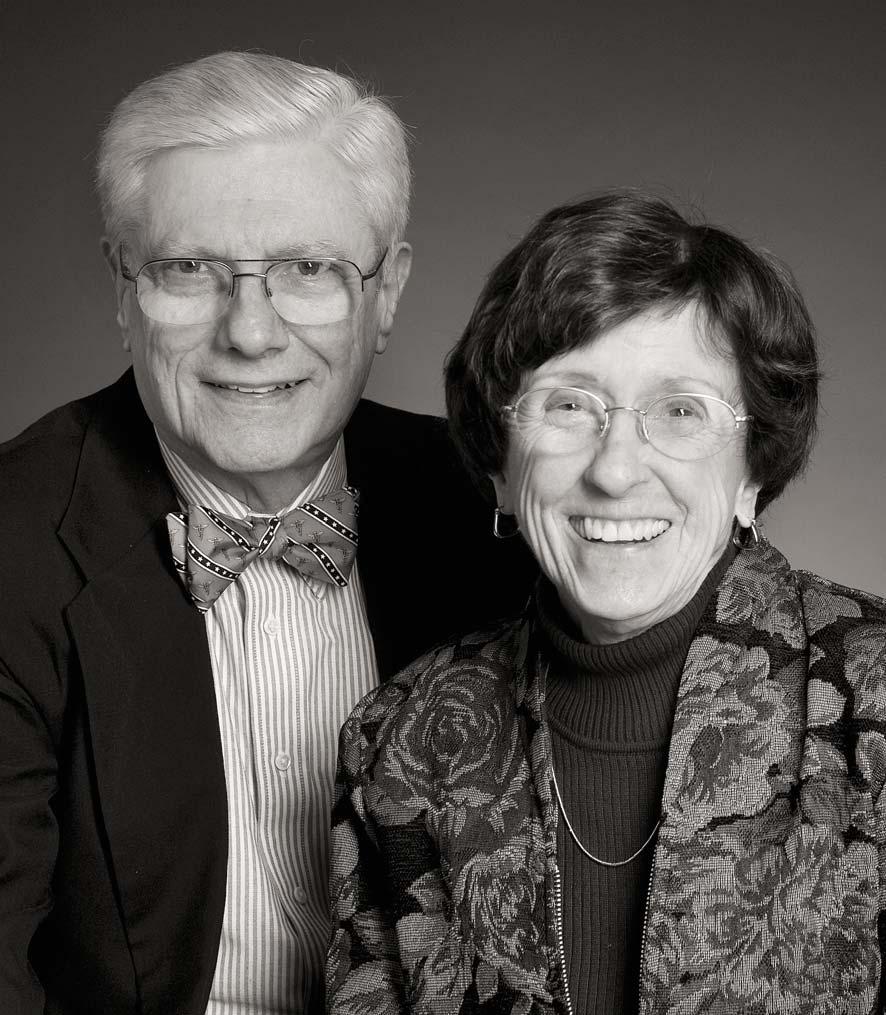
Find out more about gift planning. Visit www.emory.edu/giftplanning or call 404.727.8875.
Plan to share what you love.


















 By Sylvia Wrobel
By Sylvia Wrobel















































 By Mary Loftus • Photography by Jack Kearse
By Mary Loftus • Photography by Jack Kearse















































































